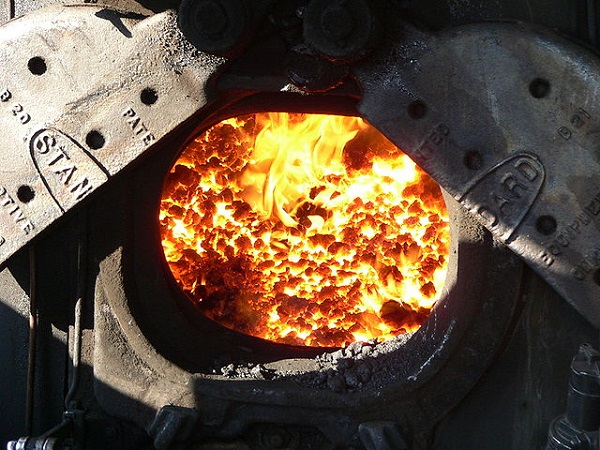
I grew up in a house with a coal-burning furnace. Once a month or so, a dump truck would back up to our garage and refill the coal bin. I was fascinated by those soft, glossy black chunks which looked like rock but burned with ferocious fire in the belly of the furnace, keeping the house toasty warm on even the coldest winter days.
I mention this just to show that I feel a little bit of nostalgia for coal. And as a New Yorker, I have to concede that coal-fired ovens make the best pizza. But coal is a relic of a former world, and it’s on its way out.
In 2015, humanity hit a milestone: renewables surpassed coal to become the world’s largest power source, according to the International Energy Agency. Solar panels and wind turbines are sprouting everywhere, and the energy they produce has gotten so cheap that even brand-new coal plants can’t compete on price. There are now twice as many people working in the solar industry as in coal mining.
All this is worth keeping in mind the next time you see a newspaper chronicling picturesque Appalachian poverty. Those tales of woe are real, but they’re not the whole story. One world is fading away, but a new one is rising to take its place.
As always, it’s the Republicans who are clinging most tightly to a vision of the past. The supposed “war on coal” has been a mainstay of conservative attacks on Democrats for years. Donald Trump, as is his wont, took this and ran with it beyond all plausibility, promising to singlehandedly revive the industry and create an overnight boom in coal-miner employment.
It’s true that President Obama’s Clean Power Plan will force many aging coal plants to shut down. But this was less of a devastating blow and more of a coup de grace to an industry that was already dying. U.S. coal miner employment peaked in the 1920s and has been dwindling for decades. As of today, coal miners are only 0.12% of the workforce, and we haven’t hit bottom yet. Far from the blue-collar majority that the GOP would have you picture, they’re a tiny, insignificant fraction of American workers, and their numbers haven’t hit bottom.
As we see in every industry, the decline of coal mining is partly from better technology that makes each worker more productive. But the bigger part, especially in recent years, is competition from natural gas. Gas has become incredibly cheap because of fracking, and coal companies can’t compete. They’re closing mines, laying off workers and declaring bankruptcy left and right. (Credit also goes to the Sierra Club and Mike Bloomberg’s Beyond Coal campaign, which has shut down hundreds of coal plants.)
This is mildly uncomfortable for an environmentalist like me, because fracking causes problems of its own. But all things considered, natural gas is a better fuel by far. It’s cleaner-burning and less polluting. Coal, meanwhile, is the dirtiest power source there is. Coal-burning power plants spew out heavy metals like mercury, toxic fly ash, asthma-causing particulates, and more carbon emissions than any other fossil fuel.
All these externalities mean that coal has enjoyed a free ride for decades. The true cost of coal isn’t reflected in the utility bill, but in smog-choked air, toxic water, people sick from respiratory disease, beautiful landscapes bulldozed to strip-mine mountains, and cities broiling, glaciers receding and coasts flooding from climate change. If these costs had to be born by the people who burned the coal, the industry would disappear overnight.
The idealistic solution, talked up by politicians from both parties, is “clean coal” – power plants with filters to capture carbon dioxide, which can be stored by injecting it into impermeable rock. It’s a clever idea, but it’s not clear it can ever be economical. The few clean-coal pilot plants have been plagued by delays, cost overruns, even accusations of fraud. And again, this technology can only make coal more expensive, at a time when the industry is already bleeding out from competition with gas and renewables.
Even besides that, coal-mining companies are notorious for treating their workers badly. It’s a dirty, dangerous job, and mine owner greed makes it worse. In my Atlas Shrugged series, I wrote about bad-actor coal companies like Peabody Energy, which spun off its pension and health obligations to retirees into a shell company that immediately declared bankruptcy; or Massey Energy, whose reckless skimping on safety equipment led to the Upper Big Branch disaster that killed 29 miners.
What I say about coal is the same thing I said about manufacturing: these jobs are disappearing, and we should be glad for that. The transition won’t be painless, but a world without coal will be better for everyone. The sooner we stop promising to revive a dying industry and start focusing on what we can retrain and equip these workers to do instead, the better off we’ll all be.
Image credit: Mark Pellegrini via Wikimedia Commons, released under CC BY-SA 3.0 license